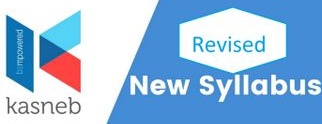ADVANCED COLLECTIONS MANAGEMENT
UNIT DESCRIPTION
This paper is intended to equip the candidate with knowledge, skills and attitudes that will enable him/her to use advanced tools, methods and techniques to manage collections in a complex business environment.
LEARNING OUTCOMES
A candidate who passes this paper should be able to:
- Formulate and implement an organisation’s collections strategy in line with legal and regulatory organisational requirements
- Manage collection of debts through Litigation
- Adjust the management of collections activity at different stages of collection cycle and advise the management regarding provisioning and write-offs
- Manage the challenges of internal and external relationships during collections
- Evaluate commercial conclusion of debts, engage and manage external collection agencies
CONTENT
- Collection policies and strategies:
1.1 Designing General and Specific Collection Policies
1.2 Restriction of application of certain policies
1.3 The reviewing of the credit cycle from application to ultimate payment
1.4 Assessing the impact of outstanding debt on your company’s financial results
1.5 Designing the hiring process of a collections manager and staff and Structuring collections work
1.6 Illustrative case studies on designing collection strategies, structuring collection work
- Collection performance measurements and reporting
2.1 Average time to issue invoices
2.2 Best possible Days Sales Outstanding (DSO)
2.3 Number of active customers per credit /collection officer
2.4 Bad Debt Percentage
2.5 Collection effectiveness index
2.6 Cash collected per aging bucket
2.7 Percentage collected of assigned collection target
2.8 Percent of cash applied on day of receipt
2.9 Partial payment agreement percentage
2.10 Receivables aging group with estimated doubtful accounts
2.11 Receivables monthly Management Report
2.12 Illustrative cases on calculation of collection performance
- Management of Non-performing Assets
3.1 Non-performing Assets definitions and concepts
3.2 Classification of accounts as Non-performing Accounts (NPAs)
3.3 Prudentials Norms classification- Normal, watch, sub-standard, doubtful and Loss
3.4 Importance of Non-performinng accounts management
3.5 Provisioning Norms
3.6 Recovery of NPAs – strategies for reducing NPA’s
3.7 IFRS 9 application in management of Non-performing Assets
3.8 Illustrative cases on management of non-performing accounts Management
- Trade Credit Insurance
4.1 Types of trade insurance products- whole turnover, selected part, selected buyers, single buyer
4.2 Types of risks covered
4.3 Content of a trade credit insurance contract
4.4 Loss and indemnification- recovery
4.5 Obligations of the insured
4.6 Debt Collection the insurer
4.7 Illustrative cases on trade credit insurance collection
- Legal Debt Collection Process
5.1 Preliminary considerations before initiating or defending debt
5.1.1 Recovery suits
5.1.2 Letters of demand
5.1.3 Capacity to sue
5.1.4 Mediation
5.1.5 Acknowledgement of debt
5.1.6 Evidence of indebtness
5.1.7 Statute barred debts
5.1.8 Viability of debt recovery
5.1.9 Availability of the debtor
5.1.10 Enforcement and Execution
5.2 Institution of suit
5.2.1 Locus standi
5.2.2 Jurisdiction
5.2.3 Pleadings
5.2.4 Service of summons
5.3 Hearings
5.3.1 Summary judgment
5.3.2 Attachment before judgment
5.3.3 Presentation of evidence
5.4 Judgement and decree
5.4.1 Extraction of decree
5.4.2 Execution of decree
5.4.3 Attachment and sale of property
5.4.4 Attachment of debts
5.4.5 Garnishee orders
5.4.6 Committal to civil jail examination, charging order, liquidation and bankruptcy
5.4.7 Illustrative cases on Legal Debt Collection Process
- Planning and preparing for effective debt collection:
6.1 Preparing reports and statistics collection activities and advising management
6.2 Classifying debtors to enable a well-targeted approach -Portfolio Management
6.3 Using the Debtors classification to analyze the potential risk each debtor poses to the company – Aged Debtors, 80/20 Rule
6.4 Controlling customer accounting activities
6.5 Drawing up a collection checklist to facilitate systematic collections
6.6 Deciding on whether to collect the debt telephone, letter, personal visit or use third party debt collectors
6.7 Application of the Aging Debtors Analysis in Collection
6.8 Coming up with Write off policies
6.9 Illustrative case studies on reporting to management, Deciding the applicable methods in collection cycle and making critical decisions such as write off or legal
- Customer Relations Schemes– Customer House Keeping
7.1 The challenges of internal and external customers
7.2 Creating an integrated customer service System
7.3 Maintaining relationship with customers and accounts payable accountants
7.4 Keeping in Touch with the Customer
7.5 Dealing with the Customer’s Problems – Review customer complaints on over charges and disputes carefully
7.6 Identifying ways to motivate your customers to pay their outstanding debts
7.7 Developing a conducive and spirit of cooperation with other departments especially sales and finance, good communication is the key
7.8 Illustrative cases on calculation of collection performance
- Outsourcing Debt collection and Recovery services
8.1 Services that require outsourcing
8.2 Steps before placing an account for collection
8.3 Factors to consider before hiring collectors
8.4 Motivation and Types of Fees paid to debt collectors
8.5 Evaluating performance of collectors
8.6 Contracts with debt collectors
8.7 Working with agencies and tracking the regularity of agency remittances
8.8 Illustrative case studies on hiring and using debt collection agencies
